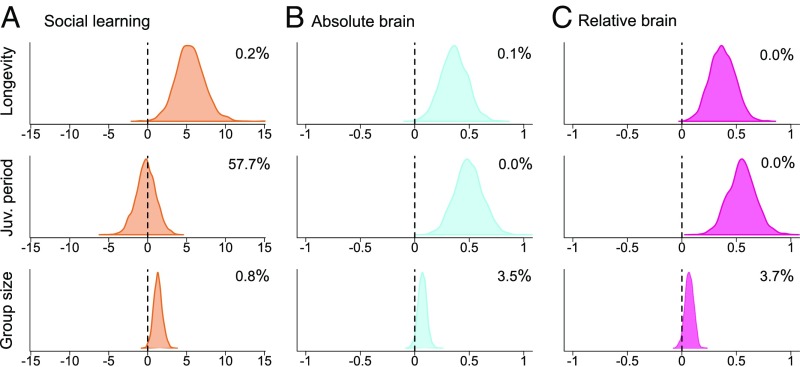Fig. 1.
Posterior distributions of β coefficients for the effects of longevity, juvenile period, and group size on (A) social learning richness, (B) absolute brain volume, and (C) relative brain volume (i.e., brain volume accounting for body mass). Here, we present effects from the simplest models, including only either longevity, juvenile period, or group size as independent variables, together with research effort and body mass for the social learning model, and body mass for the relative brain model. However, these results are not strongly affected by the inclusion of additional potentially confounding variables (Methods, Results, and SI Appendix). Percentages indicate the percentage of posterior estimates that cross zero in the opposite to the predicted direction for each effect. Distributions shifted substantially away from zero indicate evidence for effects of predictor variables in the corresponding direction whereas those centered close to zero indicate little or no evidence for effects of predictor variables.

